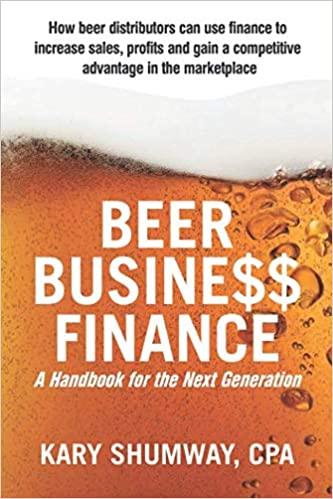Question
A pension fund manager is considering three mutual... A pension fund manager is considering three mutual funds. The first is a stock fund, the second
A pension fund manager is considering three mutual...
| A pension fund manager is considering three mutual funds. The first is a stock fund, the second is a long-term government and corporate bond fund, and the third is a T-bill money market fund that yields a sure rate of 5.2%. The probability distributions of the risky funds are: |
| Expected Return | Standard Deviation | |||
| Stock fund (S) | 13 | % | 42 | % |
| Bond fund (B) | 6 | % | 36 | % |
| The correlation between the fund returns is .0222. |
| Suppose now that your portfolio must yield an expected return of 12% and be efficient, that is, on the best feasible CAL. |
| a. | What is the standard deviation of your portfolio? (Do not round intermediate calculations. Round your answer to 2 decimal places.) |
| Standard deviation | % |
| b-1. | What is the proportion invested in the T-bill fund? (Do not round intermediate calculations. Round your answer to 2 decimal places.) |
| Proportion invested in the T-bill fund | % |
| b-2. | What is the proportion invested in each of the two risky funds? (Do not round intermediate calculations. Round your answers to 2 decimal places.) |
| Proportion Invested | |
| Stocks | % |
| Bonds | % |
Expert Answer
 Anonymous answered this
Anonymous answered this
Was this answer helpful?
0
0
316 answers
Solution:
Cov (rs, rB) = r*s*B = 0.0222*42*36 = 33.5664
The proportion of the optimal risky portfolio invested in the stock fund is given by:
Ws = [E (Rs) rf]B^2 [E(RB) rf](Cov (rs, rB)/[ [E(rs )- rf ]B^2+ [E(rB )- rf]S^2 - [E(rS ) rf + E(rB) - rf ]Cov(rs ,rB )
Ws = [(13 5.2)](42)^2 [(6 5.2)](33.5664)/[(13 5.2)(42)^2 + (6 5.2)(36)^2 [13 -5.2+6 -5.2](33.5664)
Ws = 0.9466
WB = 1 0.9466 = 0.0534
The mean and standard deviation of the optimal risky portfolio are:
E (Rp) = 0.9466*13 + 0.0534*6 = 12.63%
p = (0.9466)^2(42)^2 + (0.0534)^2(36)^2+2*0.9466*0.0534*33.5664)= 39.85%
a. The expected return on the portfolio is 12%. The equation for the CAL is
E (rc) = rf + [(E (Rp) rf)/p]c
12 = 5.2 + [(12.63 5.2)/39.85]c
6.8 = 0.18644c
c = 36.47%
Hence, the standard deviation of the portfolio is 36.47%
b-1. To find the proportion invested in the T-bill fund, remember that the mean of the complete portfolio (i.e., 14%) is an average of the T-bill rate and the optimal combination of stocks and bonds (P). Let y be the proportion invested in the portfolio P. The mean of any portfolio along the optimal CAL is:
E(rC) = (l y)rf + yE(rP) = rf + y[E(rP) rf] = 5.2 + y(12.63 5.2)
Setting E(rC) = 12% we find: y = 0.9152 and (1 y) = 0.0848 (the proportion invested in the T-bill fund).
b-2: Proportion of stocks in complete portfolio = 0.9152 0.9466 = 0.8663 or 86.63%
Proportion of bonds in complete portfolio = 0.9152 0.0534 = 0.0489 or 4.89%
THE PORTION INVESED IN T-BILL FUND IS WRONG!!!!
I NEED TO FIND THE PORTION INVESTED IN T-BILL FUND
Expert Answer
 Anonymous answered this
Anonymous answered this
Was this answer helpful?
0
0
44 answers
12% = (1-y)*5.2% + y*12.63%
0.12= 0.052 0.052y + 0.1263y
0.12-0.052 = 0.0743y
0.068/0.0743 = y
0.9152 =y = proportion in T Bill
THE PORTION IN T BILL IS WRONG IN BOTH CASES CAN ANYONE HELP ME PLEASE TO GET THE RIGHT T-BILL PORTION?
Step by Step Solution
There are 3 Steps involved in it
Step: 1

Get Instant Access to Expert-Tailored Solutions
See step-by-step solutions with expert insights and AI powered tools for academic success
Step: 2

Step: 3

Ace Your Homework with AI
Get the answers you need in no time with our AI-driven, step-by-step assistance
Get Started


